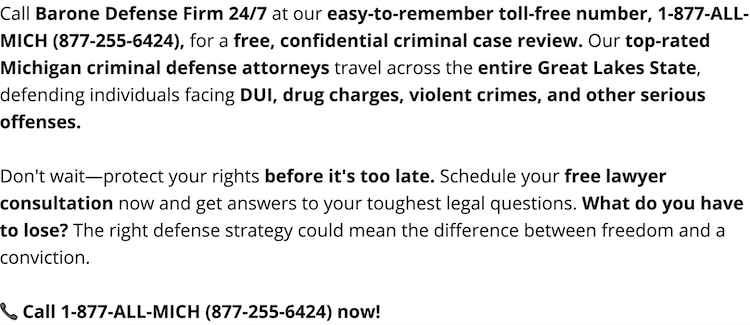What is a Pretrial Conference in The Federal Criminal Law System?
The pretrial process in the federal criminal system begins shortly after the initial arraignment. Some judges do their own pretrials while some judges have the pretrial conducted before the magistrate, often called a magistrate judge. Before whom the pretrial takes place will depend on which judge is assigned to your case.
According to Rule 16 of the Federal Criminal Procedure, the purposes of a pretrial conference are to help the litigants expedite the resolution of the case, to discourage activities that will waste the time of the litigants or the court, to facilitate the professionalism and decorum of any trial that may take place, and to assist in the resolution of the case.
The Federal District Courts for the Eastern and Western Districts have also set local court rules that apply to pretrials. For example, the Eastern District has Local Court Rule LR 16.1: Pretrial Conference, and this rule provides, among other things, that the lawyer who appears for the pretrial must have sufficient "information and authority" to fully participate and if possible, settle the case.
What Happens at a Pretrial?Every person accused of a federal crime has an absolute right to trial. However, some studies suggest that as few as 2% of federal criminal cases actually go to trial. Nevertheless, all the parties, meaning the AUSA, your federal criminal defense lawyer, and the judge assigned to your case, should all assume that the case is going to trial. A pretrial therefore addresses many of the issues that the court must address before the case is ready for trial.
Some examples of issues that will be addressed at a pretrial is the status of pretrial discovery, the status of bond and bond conditions, and developing and agreeing upon a schedule for moving forward to a trial. If there are any speedy trial act issues, then these will be addressed at the pretrial as well. The court will also assume that one of the litigants (AUSA or Federal criminal defense lawyer) may wish to file one or more pretrial motions.
What is a Pretrial Order in a Federal Criminal Case?The court "speaks" through its written orders. So, if the court wishes to impose time limits or make other rulings, these things must be put in writing and signed by the judge. The judge's ruling then has the force of law. According to Rule 12 of the Federal Criminal Rules of Procedure, although called a pretrial order, a pretrial order may be established and signed at the arraignment.
However, in most instances, the order will be entered at the conclusion of the first pretrial conference. Consequently, at the end of the pretrial the court will prepare a pretrial order that sets forth a motion and briefing schedule and deadline, the date for a future pretrial if needed, the date for a final pretrial (essentially a plea cut-off date), and a trial date.
Additionally, according to Rule 16 of the Federal Criminal Rules of Procedure, a pretrial order may also limit the time to amend the pleadings and a time to complete discovery. The pretrial order can also modify the time limits for providing discovery under Rules 26(a) and 26(e)(1).
If your federal criminal defense lawyer and the government have reached any agreements about claims of privilege or protection of the discovery material under Federal Rule of Evidence 502, then these agreements can also be included.
What is the Speedy Trial Act?The Speedy Trial Act of 1974 can be found at 18 United States Code §§ 3161-3174. This law provides time limits for completing the various stages of a federal criminal prosecution. Some examples of these time limits include the following:
- The initial charging document, whether by information or indictment, must be filed within 30 days from the date of your arrest. 18 U.S.C. § 3161(b).
- Most importantly, your trial must begin within 70 days from the above, or from the date you appear before the court, whichever is later. 18 U.S.C. § 3161(c)(1).
These are not hard and fast time limits. The Speedy Trial Act provides for several "excludable delays." At the pretrial, these delays may be identified and addressed by the judge. Identified delays will be placed into a written order signed by the judge.
One example of an excludable delay might include the time from the filing of a pretrial motion until the resolution of that motion. Therefore, it is necessary to establish a briefing schedule which sets certain deadlines: the timeframe the federal criminal defense lawyer must file motions, the timeframe in which the prosecution is required to respond to those motions, and ultimately, the resolution of those motions by the court either in the form of a hearing or a decision based upon the motions.
As noted above, another issue that is often dealt with at the pretrial hearing is the existence of any discovery issues. If the AUSA or the federal criminal defense attorney have indicated that there is or has been some delay in the production of the discovery material, then this can again affect the briefing schedule. This is because your federal criminal defense attorney cannot identify or file pretrial motions unless they have been provided with all the information to which they are entitled. Such delays in the provision or receipt of discovery again constitutes a potential period of excludable delay to the Speedy Trial Act.
At the pretrial the judge or magistrate judge will often ask the litigants if there are any special issues that must be addressed by the court. Special issues might include the necessity for a translator and the existence of certain affirmative defenses, such as an alibi defense or a psychiatric defense.
Will There be More than One Federal Criminal Pretrial?Oftentimes the pretrial conference will be conducted and then adjourned for a later date to determine whether there are other issues that have not yet been resolved. This is likely to happen when discovery has not been completed by the first pretrial. The litigants might also wish to seek an extension of the motion or plea cut-off dates or seek to have the trial date adjourned. The motion cutoff date in federal practice is real but generally somewhat flexible. This is particularly true should your federal criminal defense attorney find a new area they wish to pursue after the initial time frame set for filing motions. Most judges will allow the opportunity to file such pretrial motion.
It is not uncommon to have a second or third pretrial to allow the court and litigants to continue to keep track of those issues, most particularly when there is a consistent excludable delay to the Speedy Trial Act. Because the judge must file a written order indicating the period of excludable delay and the reasons for them, they oftentimes want to keep track of these issues by setting more than one pretrial conference prior to the trial date.
What is a Final Pretrial?The final pretrial usually occurs shortly before the trial. It is often accompanied by what is called a plea cutoff date. A plea cutoff date is the last date the court will accept a plea agreement before going to trial. The reason for cutoff is that the judges are very aware of the expense related to bringing in a jury panel. In federal criminal cases, jury panels for a single case can run up to 100 or 150 people. Therefore, judges do not want to call in a jury unless all parties have advised the judge they intend to actually proceed to trial.
<< Back to the main Federal Criminal Law page || Next Page >>
 Barone Defense Firm Home
Barone Defense Firm Home




















